Delicious round patties of corn dough, grilled, baked, fried or steamed, sometimes stuffed with cheese, meat or veggies – arepas are a typical food throughout Colombia and Venezuela, and are enjoyed by millions of people every day. With a long history and strong tradition, arepas are deeply ingrained in the culinary cultures of both countries, and both claim to be the birthplace of this beloved food.
The History
Corn, which is the base ingredient of the arepa, has its origin in pre-Columbian times; anthropological evidence shows it has been a prominent food in Colombia for about 3,000 years, and in Venezuela for around 2,800 years. Much like wheat or oats in Europe, corn formed the basis of the indigenous peoples’ diets; the Chibcha people, living in what is now Colombia, even considered corn a gift from the gods. In most tribes, women were in charge of its preparation, from soaking the corn grains to grinding them in order to make the flour that is later turned into dough.
No one knows for sure when and where the first arepa was consumed – though it is said that the Cumanagoto people, in the territory that would eventually become Venezuela, called their cornbread “erepa”. Whatever its origin, today the arepa is the most recognised icon of the Colombian and Venezuelan gastronomic traditions.
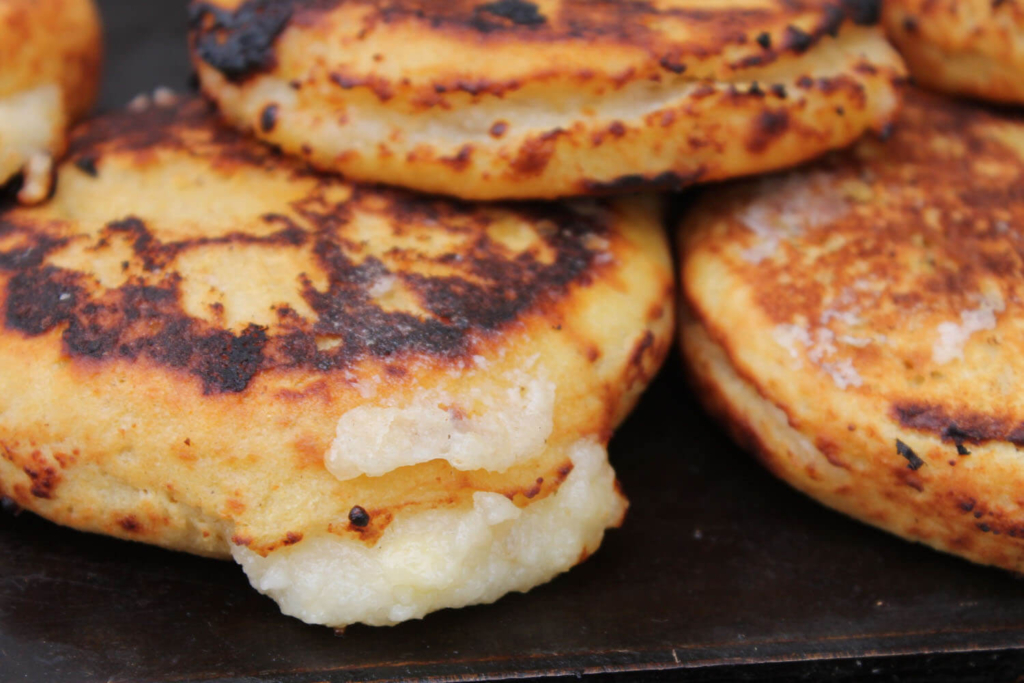
The Variations
But how easy is it to make an arepa? The secret to achieving the perfect arepa lies in how the dough is prepared; arepas can be made thick or thin, large or small, depending on personal preference and whether you want to eat it as is, or stuff it with various fillings.
The accompaniments, as well as the preparation of the arepa itself, varies widely from place to place. According to some experts, there are around 20 different types of arepas in Venezuela, while in Colombia at least 42 variants have been identified. We present the most popular in both countries.
The Colombian Arepa
Arepa de huevo – Found mostly on Colombia’s Caribbean coast, this arepa is prepared with ground maize, and is bathed in garlic water before frying, to give it a crunchy texture. Just before the arepa is fully cooked through, an egg is cracked into it. Some like to eat it with hogao, a tomato- and onion-based sauce.
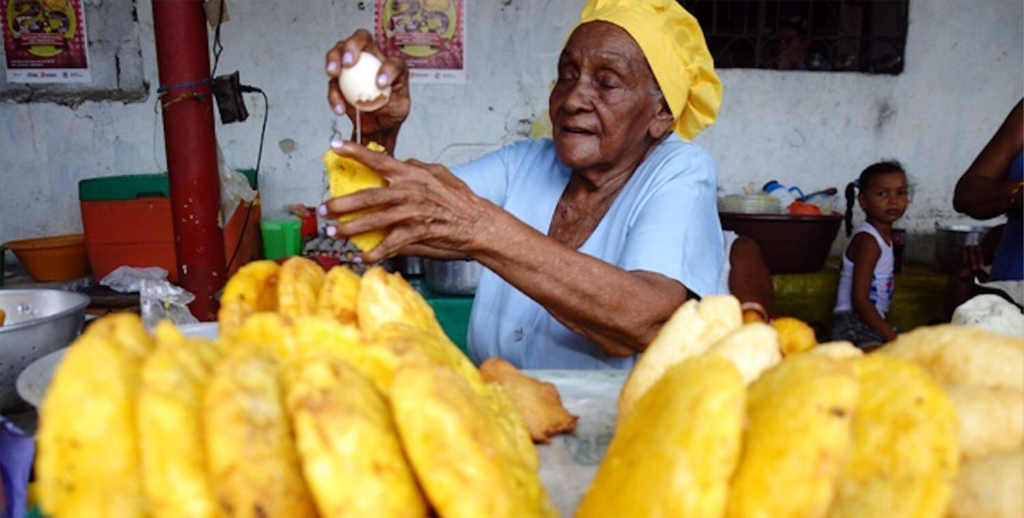
[Arepa de huevo. Photo via Wikimedia Commons]
Arepa de choclo – This preparation comes from the department of Valle del Cauca, in southwestern Colombia. It has a spongy texture, and is prepared with sweet corn and stuffed with cheese. These are generally eaten at breakfast or as a snack.
Arepa Boyacense – One of the most popular (and delicious) arepas in Colombia. Originating in Boyacá, a region located in the eastern mountain range, they’re prepared with pre-cooked yellow corn flour, wheat flour, white sugar, Colombian milk curd (cuajada) and a little butter, and are cooked on a stone, which results in a texture that’s crunchy on the outside and soft in the middle. Arepas Boyacense are accompanied with a cup of hot chocolate, or enjoyed with changua, an egg and milk soup that’s typically part of a Colombian breakfast.
Tela paisa – Thin, white and rather plain, using only corn (not even salt) in the preparation, tela paisa arepas are generally served as an accompaniment to another dish, and used to soak up the sauce from the main dish.
The Venezuelan Arepa
Whereas Colombian arepas are usually only filled with cheese or egg, in Venezuela, they’re stuffed with everything from chicken to beef, avocado and tomato. Let’s have a look:
Reina pepiada – Named in honour of the late Susana Duijm, a Venezuelan celebrity and winner of the Miss World pageant in 1955, this arepa is filled with zesty chicken salad made with mayonnaise and avocado.
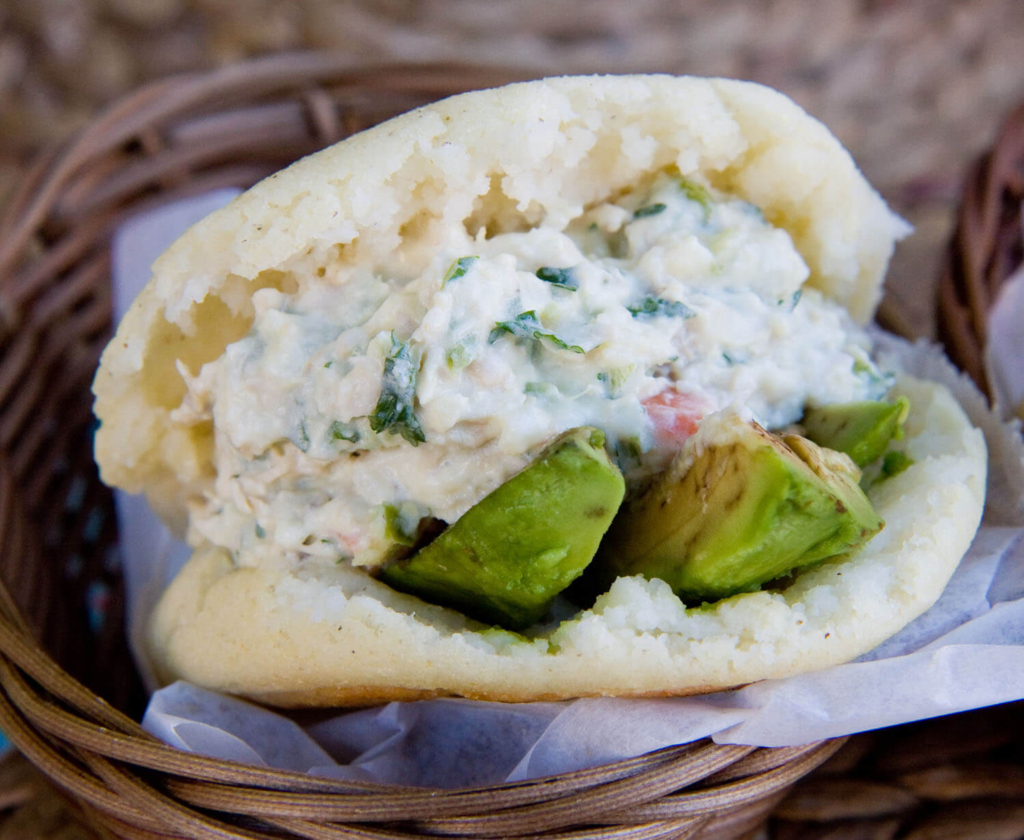
[Reina pepiada. Photo: Garrett Ziegler/Flickr]
Tumbarrancho – Originally from the state of Zulia, in Venezuela’s northwestern corner, this arepa is prepared by placing a slice of mortadella in the already roasted arepa, and then closing it and dipping it in flour and egg, before frying in oil. Finally, it’s filled with cheese, minced cabbage, tomato, tomato sauce and mayonnaise.
Rompe colchón – An arepa made from corn and mixed with various types of seafood and a vinaigrette sauce.
Llanera – An arepa stuffed with very thinly sliced meat, as well as tomato, avocado and Guyanese cheese.
The Recipe
Ready to try your hand at making arepas? Below, we lay out the basic ingredients and preparation method – the fillings we leave to your imagination.
The Cornmeal
The base ingredient of this dish. Most people use pre-cooked cornmeal that is mixed with warm water, while others people prefer to go the more traditional route, grinding their corn into flour at home.
The Water
Indispensable in getting your dough to the right consistency. You want to ensure that there are no dry lumps in the dough, so measure the water well, and add a little more if needed.
The Milk
In addition to water, whole milk adds moisture and gives the dough the right texture.
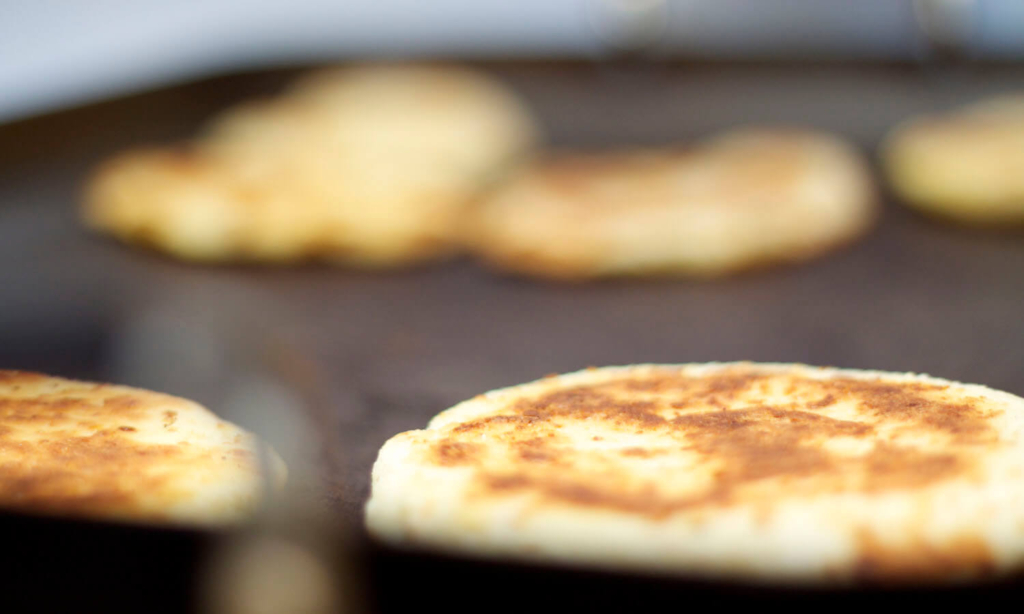
[Photo: Kris Arnold/Flickr]
The Butter
Use the butter of your choice, either salted or unsalted. The important thing is that it should be at room temperature – not cold or melted – when you add it to the dough. 2 tablespoons of butter are commonly used.
The Preparation
In a medium bowl, add ¼ cup of whole milk, a cup of warm water, 2 tablespoons of butter, a cup of cornmeal and salt to taste. Mix well to ensure the ingredients are well combined and that the dough is neither too dry nor too runny/sticky. If it’s too sticky, add more cornmeal until the dough has the desired texture; ideally, it should be smooth and not lumpy. Form balls of dough and then flatten them with your hands.
Heat a bit of oil in a pan over medium heat. Add the arepas, allowing them to cook about seven minutes per side, so that the arepas are crispy on the outside. (You may want to cover with a lid to ensure they cook through). When ready, stuff the arepas with your choice of fillings, or enjoy them plain with your favourite hot drink.
We may never know the true origin of the arepa, or be able to try all the variations that exist, but that won’t stop us from savouring them at any time of day, just like they do in Colombia and Venezuela.
[Photo at top: Eddy Milfort/Flickr]

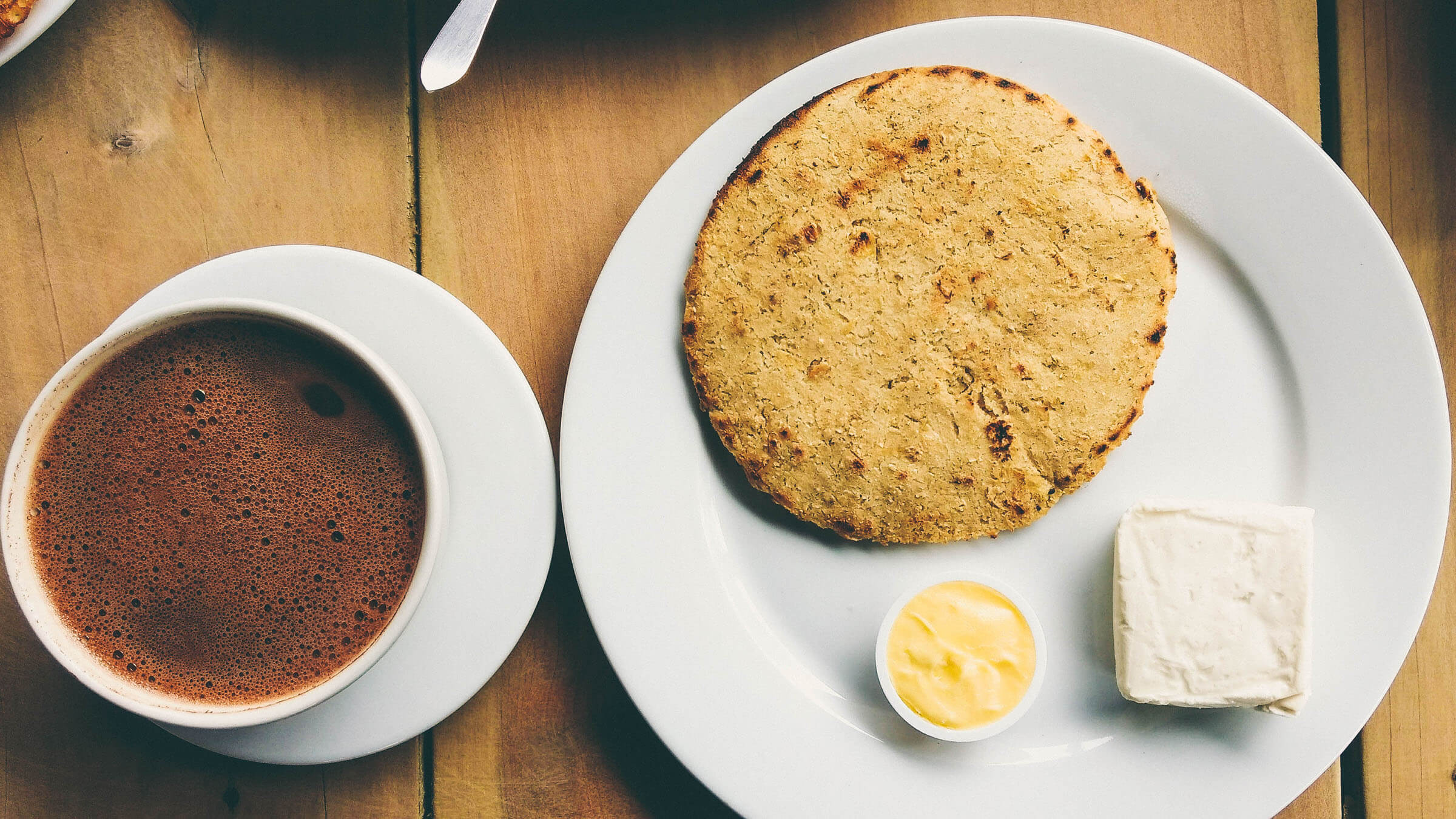
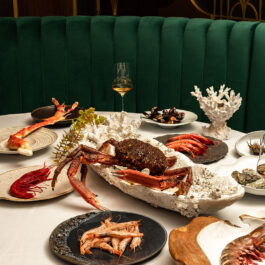










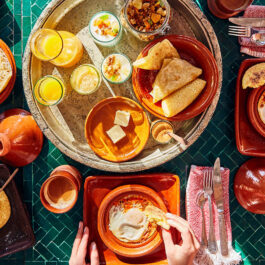
Sorry, the comment form is closed at this time.